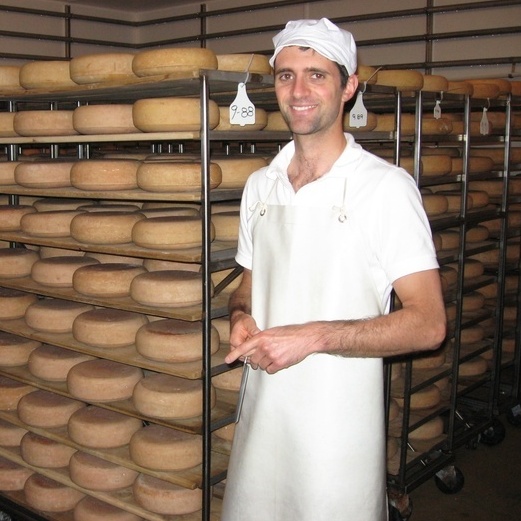Satisfy the Cheese Makers Melbourne Trusts: The Tradition of Floridia Cheese Thomastown
Satisfy the Cheese Makers Melbourne Trusts: The Tradition of Floridia Cheese Thomastown
Blog Article
Unlocking the Tricks of Artisanal Cheese Making: A Detailed Do It Yourself Guide
In the realm of culinary workmanship, artisanal cheese making stands as a testimony to the fragile equilibrium in between practice and technology. As we get started on this trip to demystify the art of producing splendid cheeses, we are faced with a tapestry of skills and secrets waiting to be unraveled.
Selecting the Right Milk
When getting started on the journey of artisanal cheese production, the selection of milk plays a crucial role in establishing the high quality and characteristics of the final item. The type of milk picked affects the taste, texture, and generally profile of the cheese.
When choosing milk for cheese making, it is essential to consider the fat material. Greater fat content in milk can lead to a creamier and richer cheese, while reduced fat content may cause a drier and stronger texture. Furthermore, the resource of the milk, whether from cows, goats, sheep, or buffalo, contributes distinctive flavors and characteristics to celebrity (Floridia Cheese Thomastown). Each type of milk brings its own subtleties, permitting a vast array of cheese selections to be crafted based on the chosen milk. Eventually, the option of milk is a basic decision that establishes the foundation for a successful artisanal cheese-making venture.
Culturing and Coagulating
To initiate the cheese-making process, the crucial actions of culturing and coagulating have to be carefully executed to change milk right into curds and whey. The type of culture made use of can dramatically affect the flavor, structure, and ripening of the final cheese product.

The timing and temperature control throughout culturing and coagulation are important elements that affect the final end result of celebrity. Correct execution of these actions is crucial to make sure the desired structure, taste, and consistency of the artisanal cheese being generated.
Draining and Pushing Curds
After the milk proteins have coagulated and the curds have been reduced to release whey, the following essential action in artisanal cheese making involves draining and pushing the curds to achieve the preferred appearance and consistency of the final cheese item. Draining is the process of dividing the curds from the whey. This can be done by moving the curds into a cheesecloth-lined colander or mold and mildew and allowing the whey to drain off normally. The moment for draining can differ depending on the kind of cheese being made and the wanted moisture content.
As soon as the curds have sufficiently drained, the next step is pressing. Pushing assists eliminate any kind of remaining whey and compacts the curds to develop a strong cheese wheel. Pressing can be done utilizing specialized cheese presses that use mild and consistent pressure over an amount of time. The duration and pressure applied throughout pushing will certainly affect the last Melbourne Made Cheese appearance of celebrity, from soft and luscious to tough and company. Correct pushing and draining pipes are critical actions that dramatically influence the top quality and features of the artisanal cheese being generated.
Aging and Flavoring Strategies
Applying careful aging and flavoring techniques is crucial in boosting the depth and complexity of artisanal cheeses, elevating their preference accounts to splendid levels of improvement and class. Aging plays an important role in creating the special flavors and appearances that distinguish artisanal cheeses. Throughout the aging process, cheeses are stored in thoroughly regulated atmospheres where elements such as temperature level, humidity, and airflow are controlled to encourage the development of advantageous mold and mildews and bacteria. This regulated environment enables celebrity to mature gradually, establishing abundant flavors and complicated aromas.
Flavoring methods additionally contribute considerably to the final preference of artisanal cheeses. Cheesemakers might pick to present additional flavors by integrating components such as natural herbs, seasonings, or perhaps fruits into the cheese during the production process. Furthermore, some cheeses are cleaned or rubbed with various liquids, such as brine or alcohol, to enhance their flavors and structures.
Wrapping and Keeping Cheeses

Final Thought
In conclusion, grasping the art of artisanal cheese making involves very carefully selecting the best milk, adhering to precise culturing and coagulating processes, draining pipes and pushing curds efficiently, and using numerous aging and flavoring techniques. By complying with these actions carefully and with attention to detail, you can produce your very own scrumptious and unique cheeses in your home. Keep in mind to cover and save your cheeses properly to guarantee ideal taste and texture advancement. Delighted cheese making!
Each type of milk brings its own subtleties, enabling for a large array of cheese ranges to be crafted based on the selected milk.After the milk proteins have coagulated and the curds have been reduced to launch whey, the following vital step in artisanal cheese making involves draining and pushing the curds to attain the preferred structure and consistency of the final cheese item. A lot of cheeses must be wrapped in wax paper or cheese paper to allow them to take a breath while securing them from drying out. For cheeses that need to continue aging, such as bloomy peels or cleaned peels, ensure they are stored in a cool setting like a cheese cavern or a refrigerator set to the ideal temperature. By paying focus to the covering and storage of artisanal cheeses, cheese manufacturers and lovers can protect the integrity of these specials and completely enjoy their intricate flavors.
Report this page